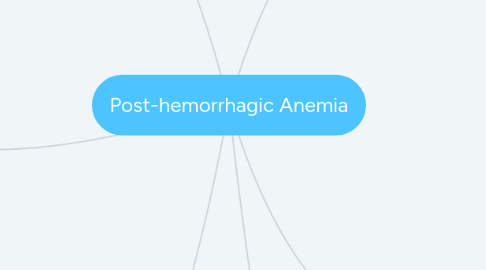
1. Common findings
1.1. Anxiety
1.2. tachypnea
1.3. weak peripheral pulses
1.4. cool extremities
1.5. pale or mottled skin
1.6. Hypotension is not a sensitive indicator of shock until 30% of blood volume is lost due to compensatory mechanisms
1.7. red blood cells are normocytic & normochromic
2. Diagnostic tests
2.1. hemoglobin values
2.2. blood gases to assess base deficit & lactate values
2.3. platelet count
2.4. fibrinogen levels
2.5. ultrasound to identify sources of bleeding in patients without trauma (ex: AAA, uterine bleeding, ruptured ectopic pregnancy)
2.6. echocardiography to assess cardiac filling & contractility
2.7. CT scan if patient is stable and source of bleeding has not been determined
2.7.1. CT scans is useful if bleeding is into the upper thigh & retroperitoneal space as these areas can hold a large amount of blood but not always are clinically evident
2.8. electrolyte levels
2.9. Testing of urine, sputum, GI fluids, stool, surgical drains, & other bodily fluids for the presence of blood
3. Inflammation
3.1. Critically injured trauma patients develop severe systemic inflammation & neuroendocrine activation that is associated with erythropoetin dysfunction, iron dysregulation, and suppression of erythroid progenitor growth
3.2. Lactic acid, inorganic phosphates, & oxygen free radicals build up due to deficient oxygenation
3.3. Systemic inflammatory response occurs: soon after injury, proinflammatory and antiinflammatory genes are up-regulated in the innate immunity
3.4. adaptive immunity genes are simultaneously down-regulated: in patients without complications these responses return to baseline quickly
3.5. ATP decreases and cell death occurs
3.6. At the site of hemorrhage, the endothelium & blood act together to promote thrombus formation activating the clotting cascade
4. Pathophysiologic etiology
4.1. most common cause of anemia
4.1.1. more than 60,000 deaths in U.S. per year & 1.9 Million deaths world wide due to hemorrhage
4.2. effects of anemia depend on severity and rate of blood loss
4.3. intravascular volume loss results in decreased venous return causing hypotension and decreased cardiac output
4.4. lack of hemoglobin carrying red blood cells to transport oxygen to tissues results in reduced tissue oxygenation
4.4.1. Oxygen delivery becomes inadequate at the cellular level for aerobic metabolism causing the cells to transition to anaerobic metabolism
4.5. plasma is replaced as water and electrolytes move from tissues and interstitial spaces into the vascular system
4.5.1. This results in hemodilution, lower hematocrit levels
4.6. immature cells enter the blood to compensate in severe blood loss
4.6.1. metamyelocytes, myelocytes, nucleated red blood cells
4.7. Internal bleeding
4.7.1. iron is recovered from destroyed erythrocytes
4.8. external bleeding
4.8.1. iron stores depleted, this hampers erythropoiesis
4.8.1.1. After 1200 ml loss of blood in males or 600 ml loss of blood in females, the loss of iron leads to iron deficiency as tissue storage of iron is depleted
4.8.1.2. 25% of menstruant females have absent iron stores, any bleeding results in anemia for them
4.9. reduced tissue oxygenation stimulates the production of erythropoetin & production of RBCs in the bone marrow
5. Causative/Risk factors
5.1. Internal or external blood loss
5.2. traumatic injury
5.2.1. arterial bleeding from any site
5.3. surgery
5.3.1. during or after surgical procedures
5.4. bleeding from Gastrointestinal tract
5.4.1. hematemesis
5.4.2. hematochezia
5.5. uterine bleeding
5.5.1. fibroids
5.5.2. ruptured ectopic pregnancy
5.6. excessive blood donation
5.7. occult bleeding: ulcers, carcinoma
5.8. chronic or acute blood loss
5.9. abdominal aortic aneurysm
6. Treatments
6.1. Rapidly identify and control sources of bleeding
6.2. surgery to repair source of traumatic bleeding
6.3. tourniquet application at proximal site of hemorrhage in the extremities saves lives when direct pressure is ineffective or impractical
6.4. restoration of blood volume
6.4.1. saline
6.4.1.1. overzealous administration of crystaloid fluids dilutes the oxygen-carrying capacity & clotting factor concentration
6.4.2. dextran
6.4.3. albumin
6.4.4. blood transfusion
6.5. Iron supplementation & exongenous erythropoetin
6.5.1. these treatments have not been found to reliably increase hemoglobin levels or reduce need for blood transfusions
